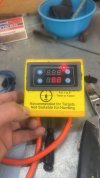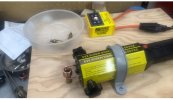So for those of you that are using home brew annealers or even flame annealers, how do you know they are annealing to the right time/temp? I mean I've heard all of the heat it until it glows theories but who knows how accurate and consistent that is?
At least with the AMP there seems to be a measurable?
I understand everyone can't afford or just doesn't want to pay for an AMP, but the other methods seems to be a guess at best.
At least with the AMP there seems to be a measurable?
I understand everyone can't afford or just doesn't want to pay for an AMP, but the other methods seems to be a guess at best.


